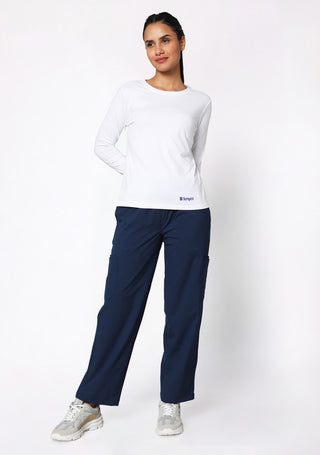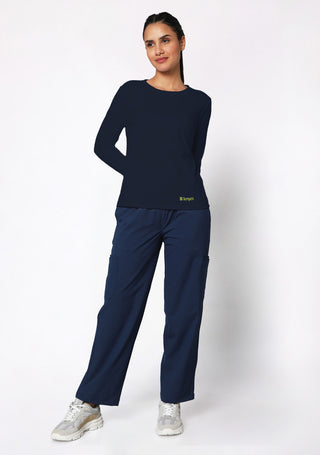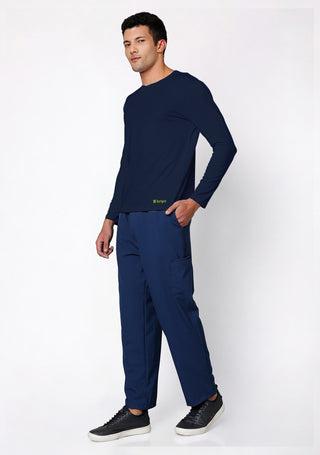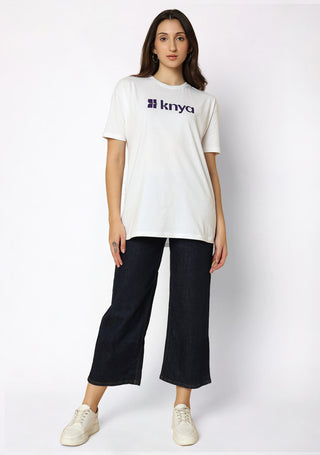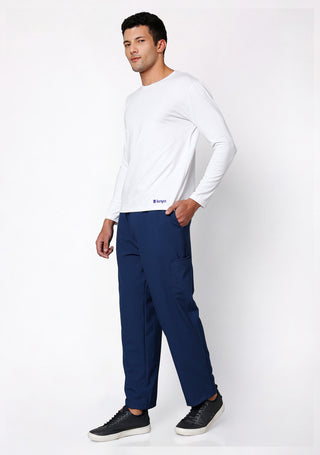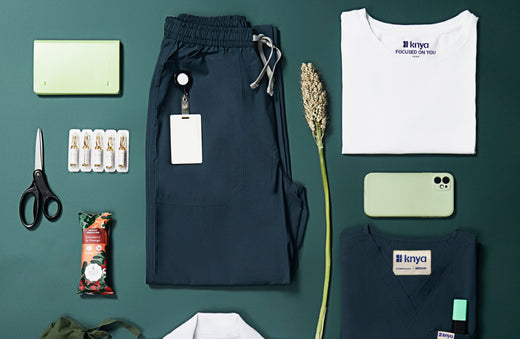Choosing the Right Fabric: A Crucial Decision for Healthcare Professionals
Hospital scrubs are more than just a uniform; they are an essential part of a healthcare professional’s daily life. The right fabric ensures comfort, durability, and hygiene—three crucial factors that directly impact performance and well-being. Whether handling long shifts, managing patient care, or navigating high-stress environments, medical staff need scrubs that offer flexibility, breathability, and protection against contaminants.
From soft, breathable cotton to wrinkle-resistant polyester blends and high-tech antimicrobial fabrics, the choice of scrub fabric plays a pivotal role in enhancing workplace efficiency and safety. But which fabric is the best for hospital scrubs? Let’s explore the different materials, their benefits, and how they cater to the specific needs of healthcare professionals.
Ready to explore our amazing scrubs collection? Browse the best here
Why Fabric Choice Matters in Scrubs
Medical professionals spend countless hours in scrubs, making fabric selection a vital consideration. Here’s why fabric choice is important:
-
Comfort: Healthcare workers require fabrics that allow ease of movement and feel soft against the skin, especially during long shifts.
-
Durability: Scrubs must withstand frequent washing and sterilization while maintaining their structure and color.
-
Hygiene: The right fabric helps prevent bacterial growth, absorbs moisture, and resists stains, ensuring a sanitary work environment.
-
Affordability: Hospitals and clinics often purchase scrubs in bulk, making cost-effective fabric choices essential.
-
Professional Appearance: Wrinkle-resistant and color-retaining fabrics ensure that medical professionals maintain a polished and presentable look.
Now, let’s examine the most commonly used fabrics in hospital scrubs and their advantages.
Common Fabrics Used in Hospital Scrubs
1. Cotton: The Classic Choice
Cotton is a natural fiber widely used in scrubs due to its softness, breathability, and comfort. It allows air circulation, keeping the wearer cool throughout long shifts.
Advantages:
- Comfortable and lightweight
- Hypoallergenic – ideal for sensitive skin
- Absorbs moisture, keeping the wearer dry
Disadvantages:
- Prone to wrinkling
- Can shrink after repeated washes
- Less durable in industrial laundry settings
To counteract these downsides, cotton is often blended with synthetic fibers for added durability and wrinkle resistance.
2. Polyester-Cotton Blends (Poly-Cotton): The Best of Both Worlds
A polyester-cotton blend is the most common fabric for hospital scrubs, typically in ratios like 65% polyester and 35% cotton. This blend combines the comfort of cotton with the resilience of polyester.
Advantages:
- Wrinkle-resistant, requiring minimal ironing
- Durable and long-lasting
- Retains color even after multiple washes
- More cost-effective than pure cotton
Disadvantages:
- Less breathable than pure cotton
- Slightly rougher texture compared to 100% cotton
Poly-cotton scrubs strike a balance between practicality and affordability, making them a top choice in healthcare settings.
3. Spandex Blends: Flexibility for Maximum Movement
Adding spandex (also known as Lycra or elastane) to scrubs provides flexibility, allowing better movement. Typically, spandex is blended with cotton or polyester to enhance comfort.
Advantages:
- High flexibility and stretchability
- Reduces fabric strain and increases longevity
- Provides a more fitted, stylish look
Disadvantages:
- Can lose elasticity over time.
- Less resistant to heat and industrial laundering.
Spandex-blend scrubs are ideal for healthcare professionals who require a full range of motion, such as emergency room staff and surgeons.
Click here to Explore All Women's Scrubs and discover our complete collection of comfortable and stylish medical apparel
Factors to Consider When Choosing Scrub Fabrics
Selecting the best fabric depends on several factors, including:
-
Job Role: Operating room staff may need antimicrobial fabrics, while general practitioners might prioritize comfort.
-
Climate: Breathable fabrics like cotton are better for warm environments, whereas polyester blends provide insulation in colder settings.
-
Maintenance: Some fabrics require more care, such as cotton, which wrinkles easily, while poly-cotton blends offer low-maintenance alternatives.
-
Budget: Large hospitals often choose cost-effective, durable options like poly-cotton blends for bulk purchases.
- Personal Preference: Some healthcare workers prefer soft, natural fabrics, while others prioritize stain resistance and easy care.
Recent Innovations in Scrub Fabrics
1. Antimicrobial Fabrics: Reducing the Spread of Infections
Many modern scrubs now feature antimicrobial coatings to minimize bacterial growth and prevent odors. These fabrics are particularly useful in high-risk areas such as surgical wards and ICUs.
2. Moisture-Wicking Fabrics: Enhancing Comfort
Some scrubs are designed with moisture-wicking technology, which pulls sweat away from the skin to keep healthcare workers dry and comfortable, especially during long shifts.
3. Eco-Friendly Fabrics: Sustainability in Healthcare
With increasing environmental awareness, some brands now offer scrubs made from recycled materials or organic cotton, reducing their carbon footprint without compromising on durability or comfort.
Conclusion: Finding the Perfect Scrub Fabric
The choice of fabric for hospital scrubs significantly impacts the comfort, hygiene, and efficiency of healthcare professionals. While cotton offers breathability, poly-cotton blends provide durability, and spandex enhances flexibility, recent innovations in antimicrobial, moisture-wicking, and eco-friendly fabrics are reshaping medical apparel.
By choosing the right fabric, healthcare workers can ensure maximum comfort and professionalism while focusing on their essential role—caring for patients. Whether you prioritize affordability, sustainability, or cutting-edge fabric technology, the perfect scrubs are out there to meet every need.




